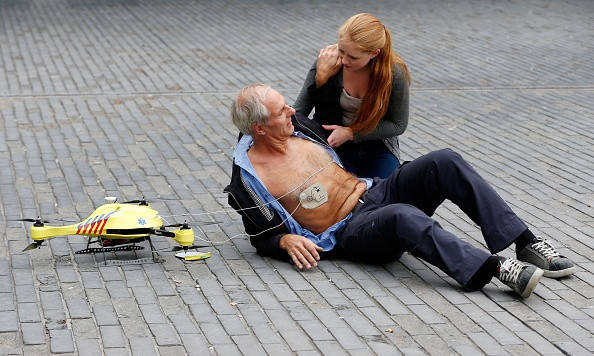Ambulance Drone to Save Heart Attack Victims Unveiled in Holland

A Dutch-based student has showcased a prototype of an 'ambulance drone,' fitted with defibrillator that can reach heart attack victims within minutes.
The drone, developed by 23-year-old Belgian engineering graduate Alec Momont, can fly at an estimated speed as high as 100 kilometres per hour.
Around 800,000 people suffer a cardiac arrest in the European Union every year and only 8.0 percent survive. The main reason for this is the relatively long response time of emergency services of around 10 minutes. The ambulance drone can get a defibrillator to a patient within a 12 square kilometre (4.6 square miles) zone within a minute, reducing the chance of survival from 8 percent to 80 percent.
"Around 800,000 people suffer a cardiac arrest in the European Union every year and only 8.0 percent survive. The main reason for this is the relatively long response time of emergency services of around 10 minutes, while brain death and fatalities occur with four to six minutes.
"The ambulance drone can get a defibrillator to a patient within a 12 square kilometre (4.6 square miles) zone within a minute, reducing the chance of survival from 8 percent to 80 percent," said Momont, reported AFP News.
The drone has been painted yellow and is driven by six propellers. It can carry a four kilograms load and track emergency mobile calls using an in-built GPS for navigation.
When the drone reaches a victim, an operator can tune in like a paramedic to instruct and watch a victim using an on-board camera that is connected to a control room.
Several emergency services are already rumored to be considering the drone, including Amsterdam, reported the Dutch daily Algemeen Dagblad.
The Dutch Heart Foundation has also praised the idea.
If the idea hits well, Momont wants to expand it to become a "flying medical toolbox" that can provide oxygen masks to people trapped in a fire or deliver an insulin injection to diabetics.
Momont's vision is to have an emergency drone network across the Netherlands in five years.
"I hope it will save hundreds of lives in the next five years," said Momont.
© Copyright IBTimes 2025. All rights reserved.





















